Fin whales (Balaenoptera physalus), also called herring whales or razorback whales, are a type of baleen whale. They are the second-longest cetacean after the blue whale. The largest fin whales are believed to reach almost 90 feet, with a typical length of 85 feet. They have a top-recorded weight of almost 74 tons. However, they have a maximum estimated weight of approximately 114 tons!
Roy Chapman Andrews called the fin whale “the sea’s greyhound.” Because of its gorgeous, slim design, it can “outrun” the fastest ocean steamship. The fin whale’s top body is brownish-gray, and its underbelly is white. There are two subspecies in the Southern Hemisphere and North Atlantic. Ready to learn more? Here are 10 incredible fin whale facts!

1. Fin Whales Store Oxygen Molecules in Their Bodies
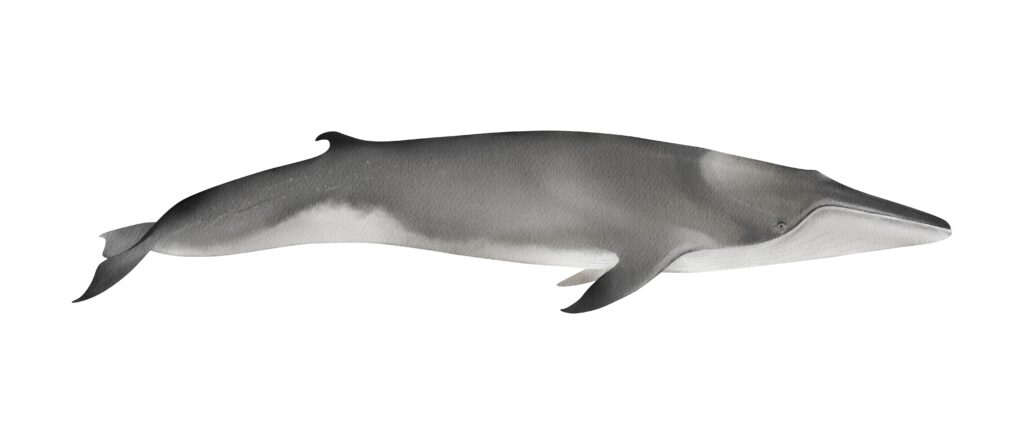
Fin whales can exhale more forcefully and employ 90% of their full lung capacity when immersed.
©Diana Askarova/Shutterstock.com
For many specialists, one of the fascinating aspects of whale facts is the effectiveness with which gigantic whales utilize their lung capacity. Some whale species spend a significant amount of their lives scouring the vast ocean in quest of the delectable critters that dwell there. Whales’ bodies are uniquely built to retain oxygen in their blood and muscles rather than in their lungs, as humans do.
The oxygen-storing proteins, myoglobin and hemoglobin, are present in extremely high concentrations. Because they can exhale more forcefully and employ 90% of their full lung capacity when immersed, they can maintain their elevated efficiency level.
2. They Are the Second Biggest Whale
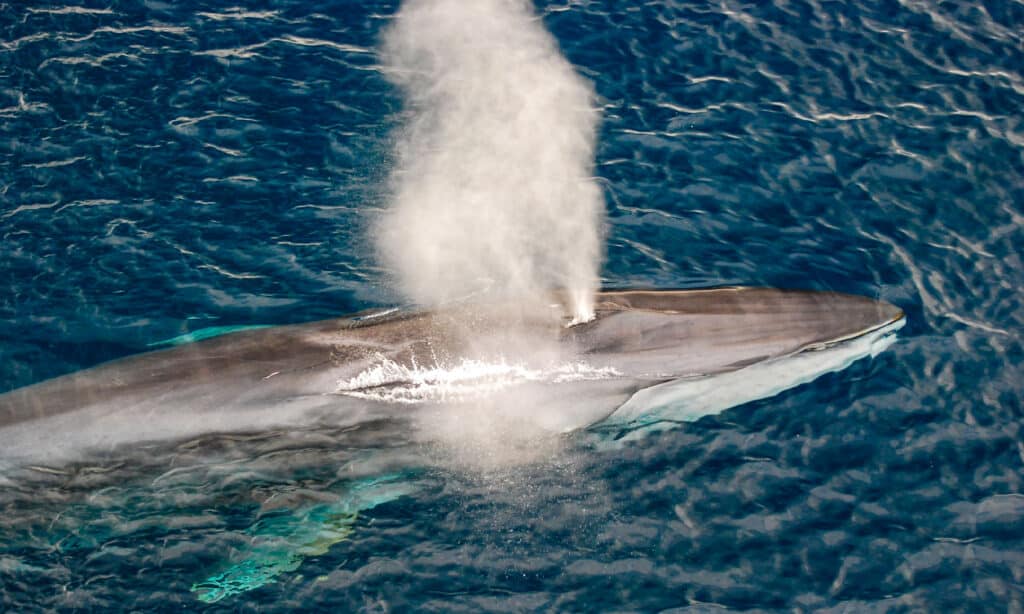
Fin whales are regarded as the second-largest whale in the world in terms of length.
©iStock.com/JG1153
The fin whale is a big baleen whale and a member of the cetacean family, which includes all whale, dolphin, and porpoise species. They are regarded as the second largest whale in the world in terms of length, immediately behind the blue whale, measuring up to 90 feet long. Fin whale females often measure 5% to 10% larger than male fin whales on average. As previously mentioned, these whales can reach lengths of up to 130 tons and approximately 90 feet (60–80 ft on average).
3. Fin Whales Have Multiple Stomachs
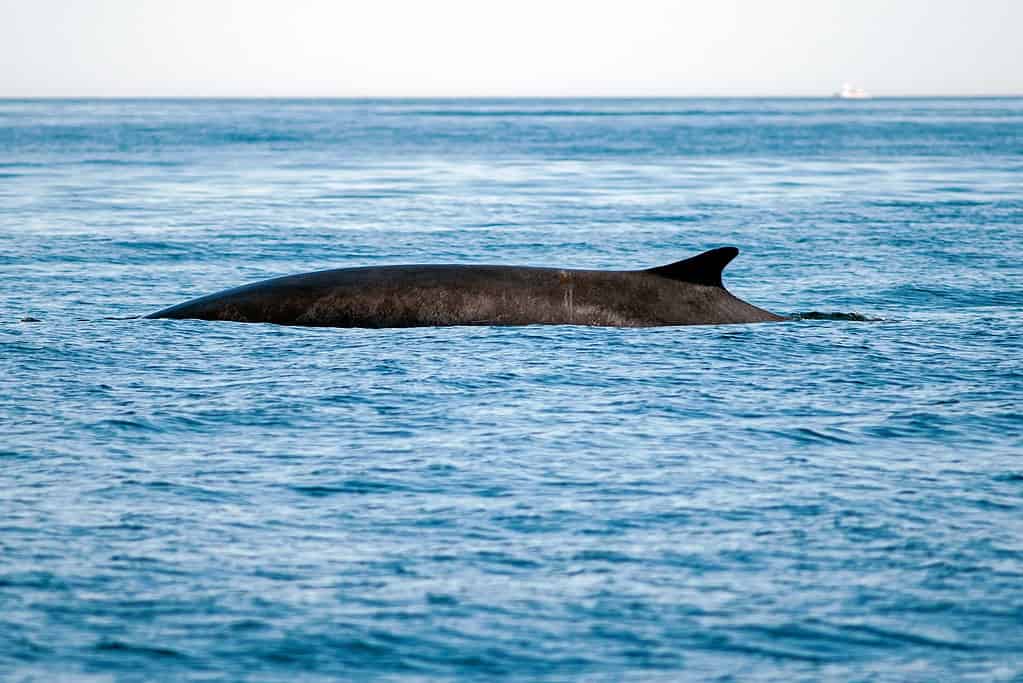
Fin whales have multiple stomachs that are all utilized for consumption.
©ChristopherRM/Shutterstock.com
Whale facts with numerous stomachs are among the most unbelievable. Surprisingly, most whales and dolphins have three to four stomachs. The following information about whales is both fascinating and astounding, including the fact that they have multiple stomachs. Yes, you read that right multiple stomachs! All are utilized for consumption.
4. They Do Not Chew Their Food

Some fin whales swallow their prey whole, while others chew their food.
©Cephas, CC BY-SA 3.0 – License
How whales hunt and eat their prey is another interesting whale truth for our visitors. Known for their enormous size, the following facts about whales can astound you. This suborder of whales uses their teeth in many ways. While some of them swallow their prey whole, others chew their food. Some whales with teeth use them to show dominance, especially while mating.
The number of teeth that whales have varies depending on the species. Since they are baleen whales, fin whales lack teeth in favor of comb-like baleen plates comprising the same keratin as our hair and nails. Baleen plates are used as a sieve to separate food from the water in a whale’s mouth.
Baleen plates confine a whale’s food supply inside its mouth while allowing water to freely pass through them, like how a sieve allows water to drain from a pot. The length of baleen plates varies depending on the species of whale, making the following sets of whale facts fascinating as well!
5. Fin Whales are Really Colorful

Fin whales have a range of colors on their bodies, from white to gray to dark charcoal.
©Israel Police, CC BY-SA 3.0 – License
Particularly well-known for their stunning and distinctive asymmetrical coloring are fin whales. On one side of their lower jaw, it is white, while on the other, it ranges in hue from gray to dark charcoal. This asymmetry continues inside the baleen plates of their jaws. On the right side is cream-colored baleen, and on the left is black baleen. These whale facts are a work of art right there.
6. Whales Can Jump Fully Out of the Water
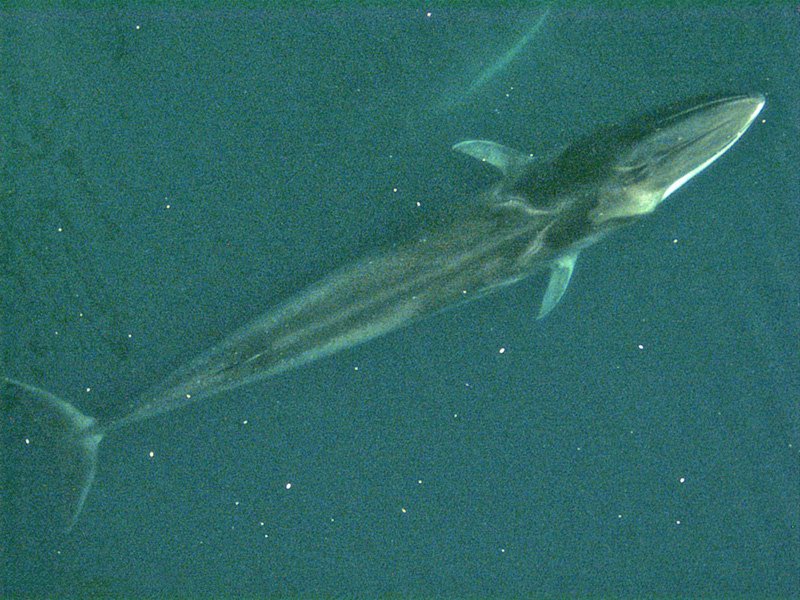
Fin whales are considered the most acrobatic of all the larger whale species.
©Bawolff – Public Domain – License
The fact that whales can extend their entire bodies entirely out of the water must be included in interesting and mind-blowing whale facts. It is known as breaching when whales jump out of the water, and both whales and dolphins are renowned for this extraordinarily athletic and acrobatic show.
However, not all whales are capable of breaching. Not all whales swimming in the ocean will throw their enormous bodies into the air. It is wonderful when a whale is traveling by air. Whale facts are fascinating because fin whales are thought to be the most acrobatic of all the larger whale species. Anyone who witnesses one of their enormous bodies as it explodes out of the water will never forget the sight.
7. They Communicate Through Using Sound
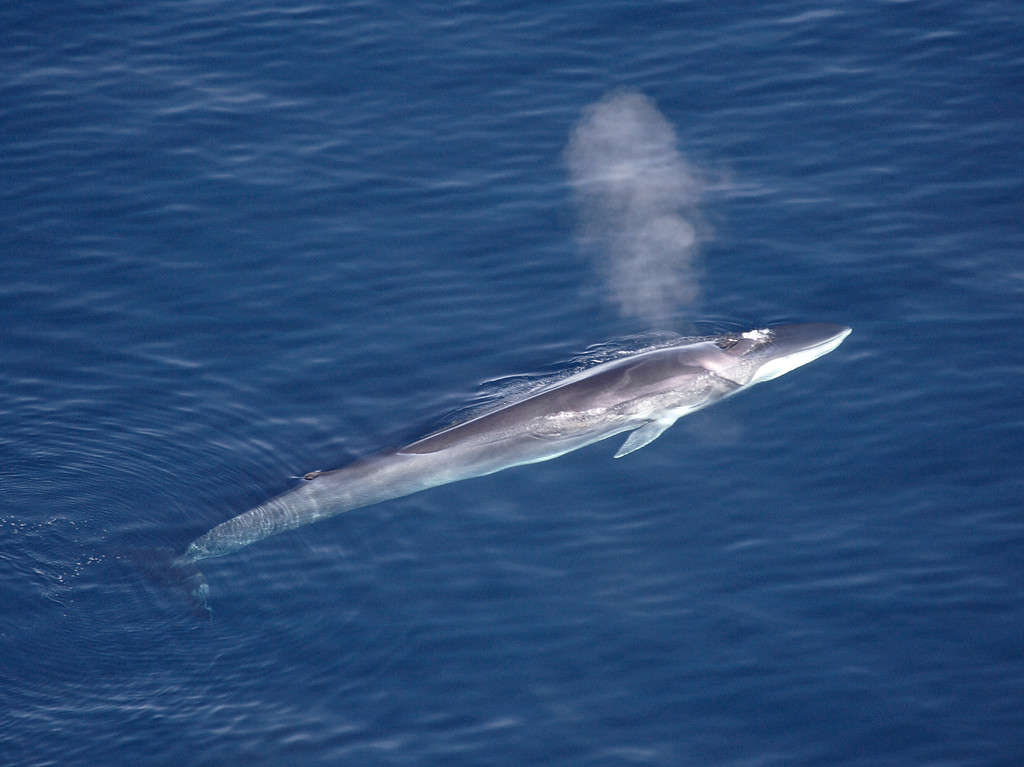
Their calls may cover greater distances with far less distortion, thanks to the lower frequency sounds.
©Aqqa Rosing-Asvid – Visit Greenland, CC BY 2.0 – License
How whales communicate with one another is another whale fact that interests marine biologists as well as audiologists and conductors of music. Baleen whales use moans, grunts, and groans to communicate, in contrast to toothed whales, who employ a variety of distinctive clicks and whistles. It is “all about that bass, no treble” for baleen whales.
Their calls may cover greater distances with far less distortion, thanks to the lower frequency sounds. Humpback males are the stars of the underwater orchestra of noises. These massive giants can sing for hours on end and hold the record for singing the longest songs, with some sonnets lasting a full day and some reaching 10 minutes on repeat.
Due to their frequent solitary travel and extensive global migrations, blue whales’ vocalizations have one of the largest distances to traverse. Although their frequency is too low for human ears to detect, blue whales can hear each other up to 500 miles away when they moan.
8. They Can Hold Their Breath For Up To 15 Minutes
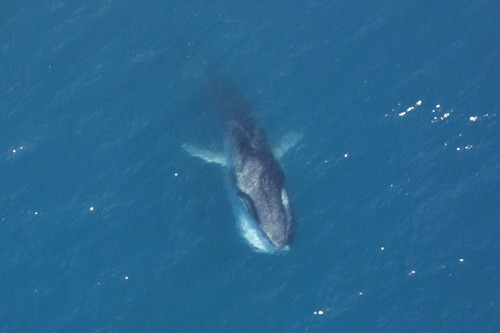
Fin whales can hold their breath for almost 15 minutes.
©Neil916 – Public Domain – License
These whales occasionally cooperate by swimming in circles around their prey. This startles their prey into curling into a little ball. The whales then move in on their target, snatching up massive quantities of food one by one. These marine mammals have been seen holding their breath for almost 15 minutes during deep dives. However, most dives are far shorter than that.
9. They Have a “Filter” Method for Feeding

Filter feeders and fin whales approach their prey while swimming with their mouths open.
©Régis Kuckaertz, CC BY-SA 2.0 – License
The main components of fin whales’ diets are fish, krill, squid, and crustaceans. Most of the time, these whales sail in pods of up to 8. However, at feeding times, pod sizes can occasionally exceed 100. Filter feeders and fin whales approach their prey while swimming with their mouths open. They ingest a lot of food and water this way. They then discharge the water while encasing their prey in the baleen bristles of their mouth. The baleen bristles function as a filter by letting water flow through while keeping their food from escaping.
10. When Not Feeding Fin Whales Are Solitary Whales

Fin whales prefer to travel alone or in small groups.
©Annie Douglas – Public Domain – License
These whales can be seen cruising in all the world’s major oceans. However, they tend to avoid a few places, like the coldest and warmest polar regions. This is where massive ice packs may occur. Because they are solitary animals, fin whales prefer to travel alone or in small groups. This is unlike other whales, who form strong family ties and relationships with huge groups.
The photo featured at the top of this post is © iStock.com/JG1153
Sources
- Wikipedia, Available here: https://en.wikipedia.org/wiki/Fin_whale
- ANIMALIA, Available here: https://animalia.bio/fin-whale
- Animal Fun Facts, Available here: https://www.animalfunfacts.net/whales/98-fin-whale.html2
Thank you for reading! Have some feedback for us? Contact the AZ Animals editorial team.






